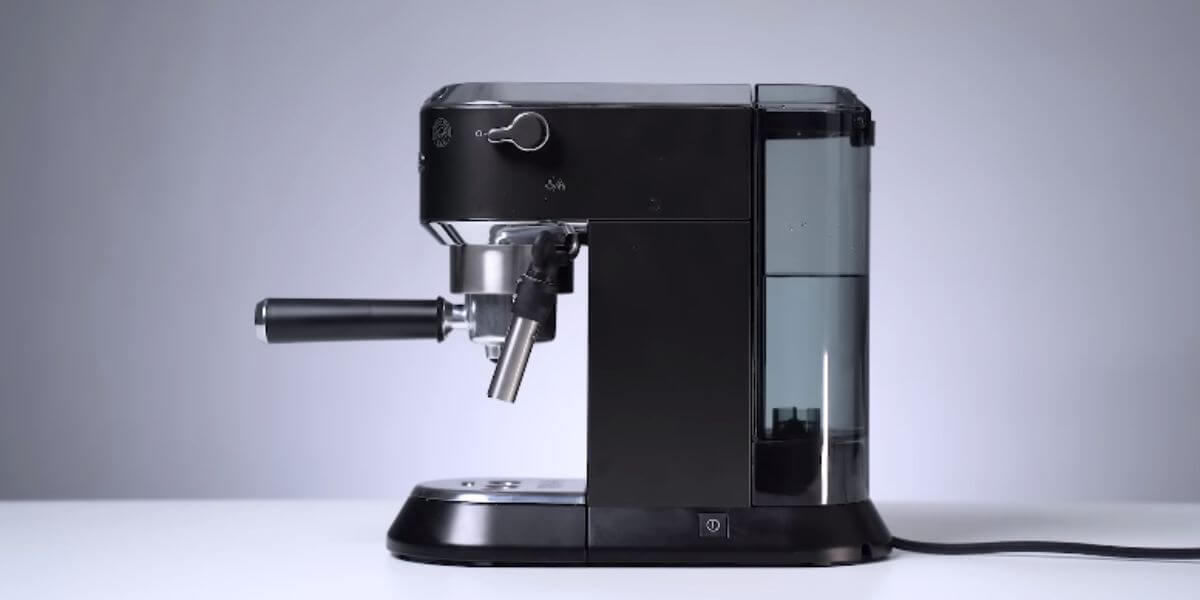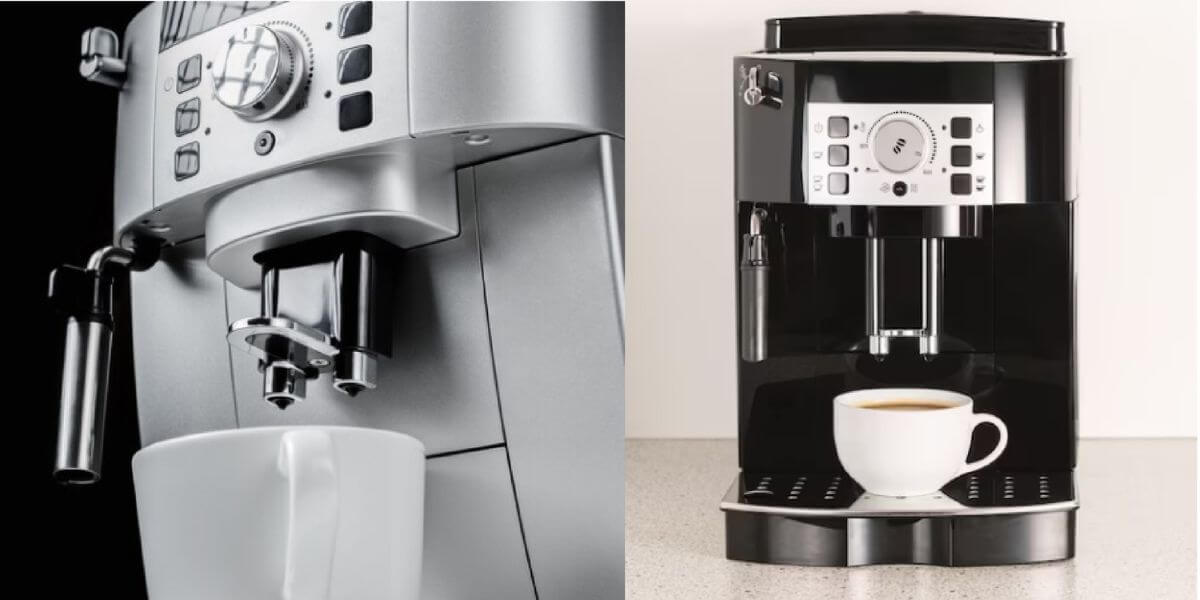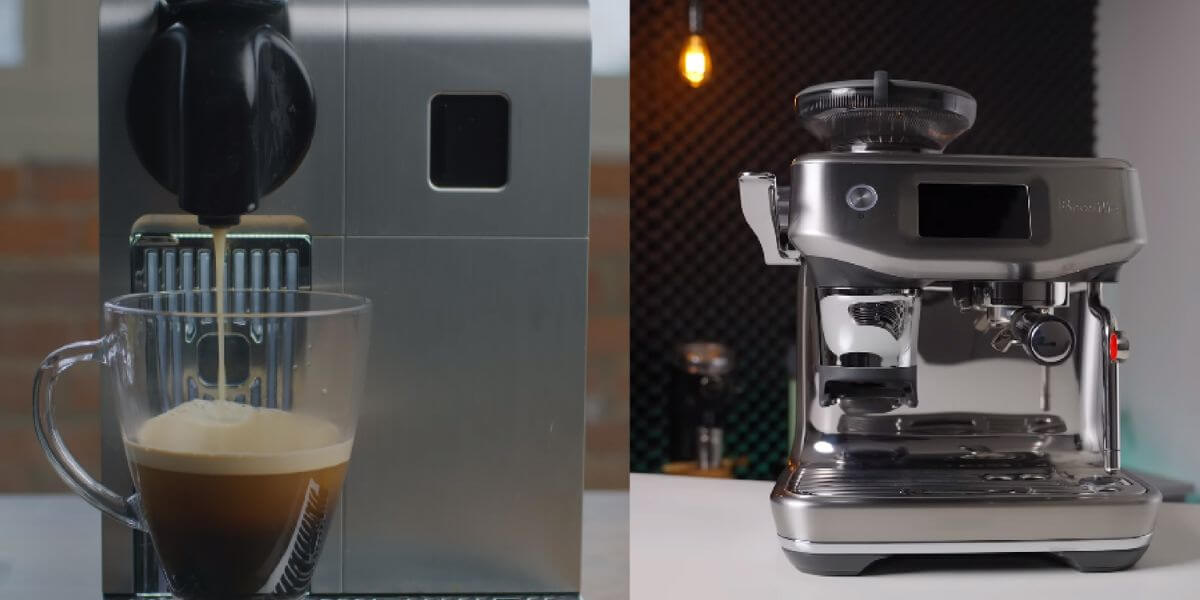How to Descale Breville Espresso Machine: Expert Tips & Tricks
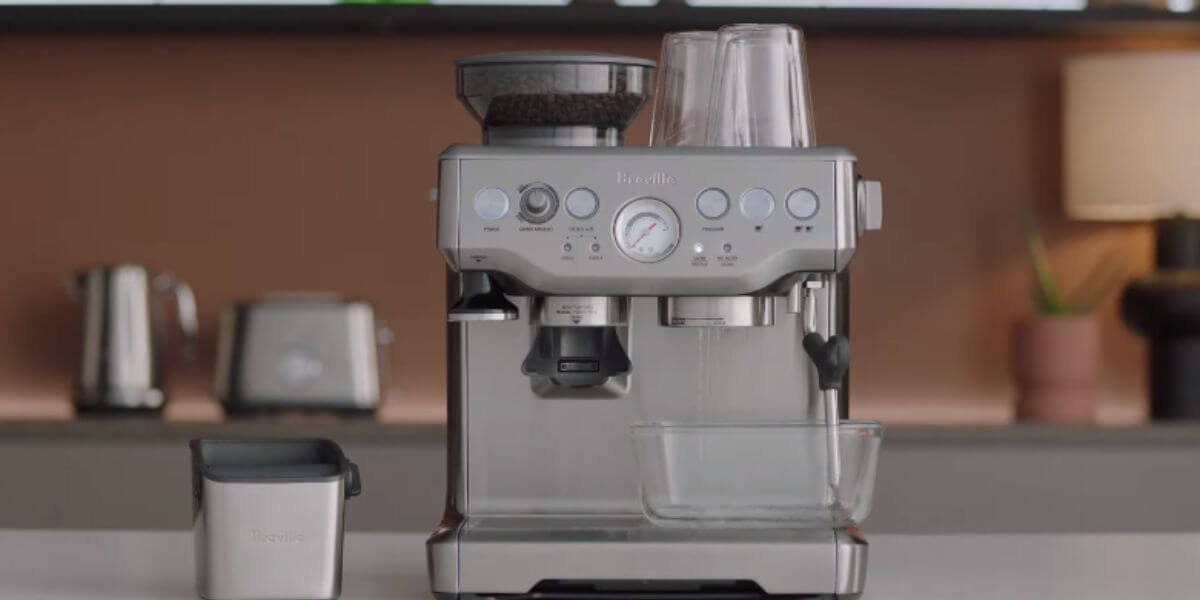

A well-made cup of espresso is the ultimate approach in the world of coffee lovers. If you’re the proud owner of a Breville espresso machine, you’re already on the right path to coffee nirvana. But there’s a crucial maintenance task that often gets overlooked – descaling. This informative guide looks into the specifics of the Descale Breville espresso machine to guarantee that it consistently produces the best brews.
Understanding Descaling
Descaling is removing mineral deposits that accumulate in your espresso machine over time. These deposits, primarily composed of calcium and magnesium, can negatively affect the machine’s performance. Descaling is crucial for maintaining the quality of your espresso.
Breville espresso machines, known for their exceptional quality, are no exception when scaling. Descaling is vital for Breville machines as it addresses issues like altered taste, temperature inconsistency, and pump functionality problems. By maintaining your Breville machine, you’ll continue to enjoy premium coffee.
Getting Started
Gather Your Supplies
Before embarking on the descaling process, it’s essential to gather the necessary supplies:
Descaling Solution: You can buy a commercial descaling solution for espresso machines. Alternatively, you can create a homemade solution using citric acid or vinegar (though this is not recommended for Breville machines).
Cleaning Brushes: These brushes are used to clean various parts of your machine, ensuring thorough descaling.
Container for Water: You’ll need a container to hold water for flushing and rinsing during the descaling process.
Safety Precautions
Safety should be a top priority during descaling to protect both yourself and your espresso machine:
Protective Gear: To avoid contact with descaling solution and hot water, wear gloves and safety glasses, such as gloves.
Machine Safety: Ensure your espresso machine is unplugged and completely cooled down before starting the descaling process to prevent electrical hazards and burns.
Ventilation: Perform descaling in a well-ventilated area to avoid inhaling fumes from the descaling solution.
Step-by-Step Descaling Process
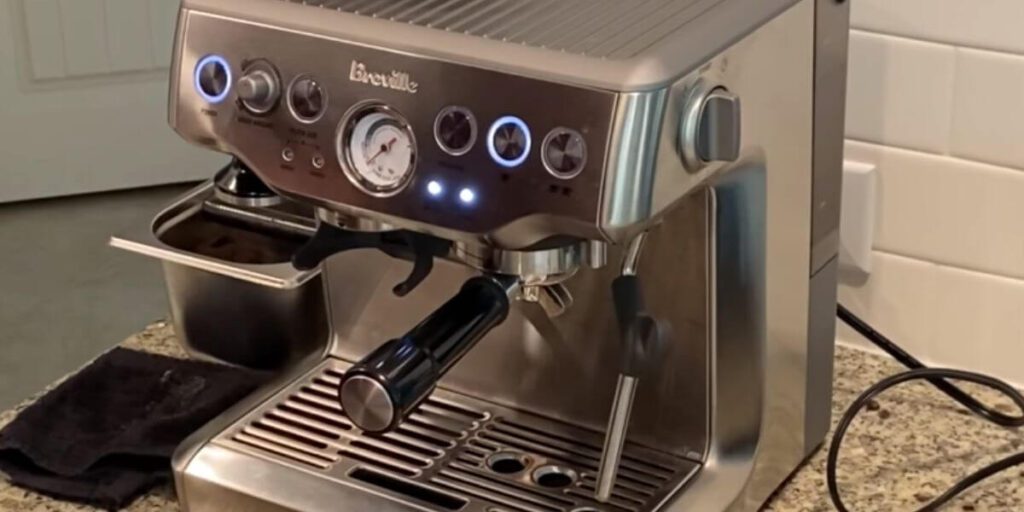
Preparing Your Breville Espresso Machine
Before you start descaling your Breville espresso machine, properly prepare it. Follow these steps:
Machine Preparation:
- Ensure your Breville espresso machine is turned off and unplugged.
- Remove the water reservoir from the machine.
- Empty any remaining water from the reservoir.
- Erase and empty the drip tray and coffee puck container.
Check your machine’s user manual for specific instructions related to descaling, as different models may have unique requirements.
Creating the Descaling Solution
To create a homemade descaling solution, you can use citric acid. Follow this recipe:
Homemade Descaling Solution Recipe:
Ingredients:
- 1 to 2 tablespoons of food-grade citric acid
- 1 quart (approximately 1 liter) of fresh water
Instructions:
- Measure 1 to 2 tablespoons of food-grade citric acid.
- Mix the citric acid into 1 quart (approximately 1 liter) of fresh water. Ensure the citric acid is fully dissolved.
Note: While this homemade solution suits many espresso machines, checking your Breville machine’s user manual is essential. Breville machines may require a commercial descaling solution.
Descaling Procedure for Your Breville Espresso Machine
Follow these step-by-step instructions to Descale Breville espresso machine effectively:
Descaling Breville Espresso Machine:
- Place an empty and clean container under the coffee spouts to catch the descaling solution.
- Ensure the machine is off and unplugged.
- Pour the prepared descaling solution into the water reservoir.
- Turn on the machine. Some Breville models may have a specific descaling mode, so consult your user manual to activate it if necessary.
- Initiate the descaling process by following your machine’s instructions. This typically involves starting the flow of the descaling solution through the device.
- Allow the solution to run through the machine, typically by dispensing it through the coffee spouts. It may pause to soak and dissolve scale deposits within the machine’s internals.
- Once the descaling solution has flowed through the machine, turn off the engine and unplug it.
- Empty the container that collected the used descaling solution.
Rinsing and Cleaning Process
To ensure there is no residual descaling solution left in your machine, follow these steps for thorough rinsing and cleaning:
- Remove and rinse the water reservoir thoroughly to remove any remaining descaling solution.
- Fill the water reservoir with fresh and clean water.
- Place an empty container under the coffee spouts again.
- Turn on the machine and dispense fresh water through the coffee spouts. This rinses out any traces of the descaling solution.
- Continue this process until the water reservoir is empty.
- Empty the container that collected the rinsing water.
- Reassemble the machine by returning the drip tray, coffee puck container, and the cleaned water reservoir.
Your Breville espresso machine is now descaled, rinsed, and ready for use. Regular descaling and cleaning ensure your machine maintains peak performance and consistently delivers delicious espresso.
Maintenance and Preventative Measures
Regular Descaling Schedule: The Key to Espresso Machine Maintenance
Maintaining your Breville espresso machine goes beyond the occasional descaling; it requires establishing a regular descaling schedule. Here’s why it’s crucial and how often you should perform it:
The Importance of a Descaling Routine:
Espresso Machine Longevity: Descaling is not merely about maintaining taste; it’s about prolonging your espresso machine’s lifespan. Scale accumulation over time can harm internal parts, requiring expensive repairs or replacement.
Optimal Taste and Temperature: Descaling ensures that your machine consistently brews espresso at the right temperature and maintains the intended flavor profile. Scale buildup can alter the taste and temperature of your coffee.
Efficient Pump Functionality: A clean machine with minimal scale buildup ensures the pump operates efficiently, providing the proper pressure for extracting coffee. This efficiency translates into better espresso quality.
Suggested Maintenance Schedule:
The frequency of descaling depends on your water hardness, usage, and the type of descaling solution you use. However, as a general guideline:
- For areas with hard water (high mineral content), descale every 2 to 3 months.
- For areas with softer water, you can extend this to every 6 months.
- If you use your espresso machine heavily, consider descaling more frequently, about once a month.
Regular maintenance doesn’t stop at descaling; it also involves regularly cleaning the exterior, drip tray, and coffee puck container. Additionally, replace water filters, if applicable, as the manufacturer recommends.
Water Quality Matters: The Impact of Water on Espresso
The performance and flavor of your espresso are strongly affected by the quality of the water. Let’s explore why it matters:
Water Quality for Espresso:
Taste and Aroma: The water used has a major impact on the flavor and aroma of your espresso. Water with impurities or off-flavors can negatively affect the taste of your coffee.
Mineral Content: Ideal brewing water contains a balanced mineral content. Calcium and magnesium are minerals that impact the extraction process and improve flavor. However, excessive minerals can lead to scale buildup, affecting machine performance.
Filtering Solutions: To ensure the best water quality for your espresso machine, consider using filtered water. Water filters remove impurities and excessive minerals, improving the taste and extending the lifespan of your machine.
Choosing the Right Water:
If you’re not using filtered water, consider bottled spring or tap water with a balanced mineral content. Avoid distilled water, as it lacks essential minerals and can negatively impact flavor.
In summary, maintaining your Breville espresso machine involves regular descaling and paying attention to the quality of water you use. Following a descaling schedule and using appropriate water ensures your machine’s longevity, consistent taste, and optimal performance.
Troubleshooting Common Issues
Identifying Machine Problems
Even with proper maintenance, issues can arise. In this section, we’ll help you identify common issues related to scaling. Understanding the problem is the first step in finding a solution.
Addressing Scaling-Related Problems
We provide solutions for scaling-related problems, ensuring your Breville espresso machine continues to deliver exceptional coffee. Learn how to fix these issues and enjoy your espresso without hiccups.
Conclusion
In conclusion, Descale Breville espresso machine is not just a chore; ensuring you continue enjoying the perfect cup of espresso every day is necessary. You can maintain the taste, temperature, and pump functionality that make your Breville espresso machine a cherished possession by following the instructions and suggestions in this guide.
Remember, a well-maintained machine equals a well-brewed espresso. So, remember to schedule regular descaling sessions and keep your Breville espresso machine running smoothly.
Frequently Asked Questions
How often should I Descale Breville espresso machine?
Depending on water hardness, it’s recommended to descale your Breville machine every 2-3 months.
Can I use vinegar as a descaling solution?
While vinegar is an option, we recommend using a dedicated descaling solution for better results and to prevent potential damage.
Why is my espresso machine producing weak coffee?
Weak coffee can be a result of scaling. Descaling can help improve the taste and strength of your espresso.
What should I do if my machine’s pump makes strange noises?
Unusual pump noises can be due to scaling affecting pump functionality. Descaling should help resolve this issue.
Is it necessary to clean the water reservoir during descaling?
Yes, cleaning the water reservoir is a crucial step to ensure your machine is free from any descaling solution residue.
Can I use bottled water instead of tap water in my Breville espresso machine?
Bottled water with low mineral content is an excellent alternative to tap water, as it reduces the chances of scaling.

